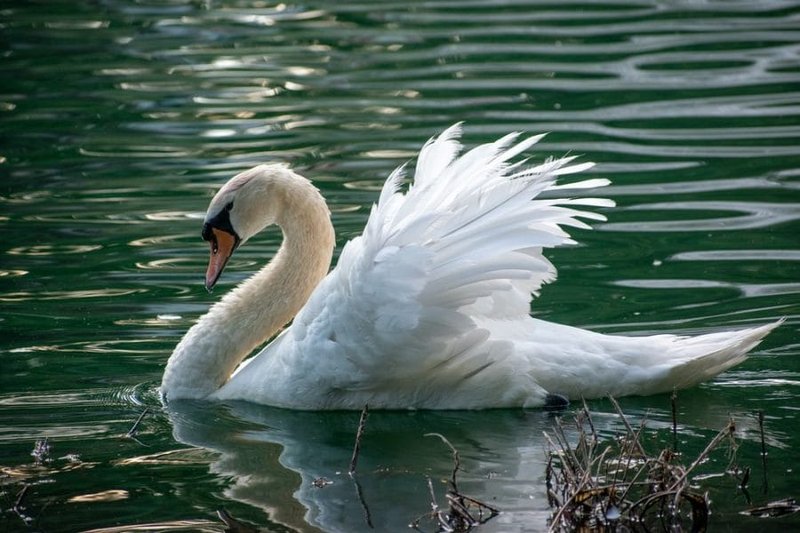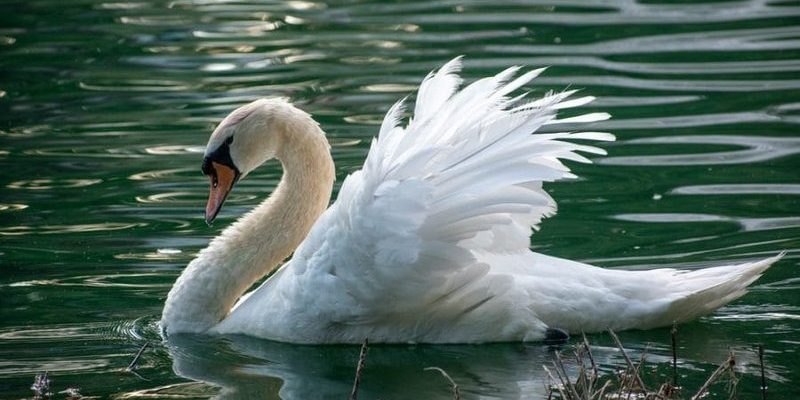
Imagine you’re strolling by a serene lake, and you spot a swan dipping its head beneath the water. It looks like it’s just enjoying a leisurely swim, but underneath, it’s on a mission for a tasty snack. Swans are quite skilled foragers, using a mix of hunting and scavenging techniques. Let’s dive into the fascinating ways these birds fill their bellies and the types of food they enjoy!
The Diet of a Swan
Swans are primarily herbivores, which means they enjoy a plant-based diet. However, they can also munch on small aquatic animals when the opportunity arises. Their preferred palette includes:
- Water plants: Swans love to feast on various aquatic vegetation, especially grasses, pondweeds, and algae.
- Seeds and grains: They also enjoy grains like rice, wheat, and corn, which they might find near farmland.
- Insects and small fish: Although rare, they might eat insects or tiny fish if they’re feeling adventurous and hungry.
By feeding on these different food sources, swans can adapt to their surroundings and what’s available. Whether it’s the tender shoots of a water lily or some leftover grain from a nearby field, these birds know how to make the most of their environment.
How Swans Forage for Food
Swans have some unique techniques for finding food. When they forage, they often use their long necks and specialized behaviors to reach their meals. Here’s how they do it:
- Head Diving: Swans are known for their head-diving technique. They dip their heads into the water, stretching their long necks to reach underwater plants. It’s not just about the dive; it’s also about knowing where the tastiest plants grow. Some swan species, like the mute swan, can dive deeper than others, making it easier to access a wider range of food.
- Surface Grazing: Sometimes, swans prefer a more relaxed approach. They’ll glide along the water’s surface, snacking on plants that float. This method is less energy-consuming and allows them to enjoy a variety of food without going underwater.
The swan’s foraging habits not only showcase their adaptability but also highlight their role in the ecosystem, helping to keep waterways healthy by consuming excess plant life.
The Role of Seasonal Changes
Just like us, swans have to adjust their diets with the seasons. During spring and summer, when the water is full of plants and insects, they can feast on a buffet of flavors. As temperatures drop in fall and winter, their options might diminish. Here’s what happens:
- Spring and Summer: This is the peak foraging season. Swans can find plenty of green vegetation, and it’s prime breeding time, too. They need extra energy to build nests and raise their young.
- Fall and Winter: Food becomes scarcer. Swans may look for grains in harvested fields or rely more on aquatic plants that survive the colder weather. Some species migrate to warmer areas to find better food sources during these months.
Understanding how swans adapt their diets seasonally is crucial for conservation efforts and ensuring they have the right habitats to thrive throughout the year.
Swans and Human Interaction
Swans often live near human-populated areas, which introduces both benefits and challenges. On one hand, humans can provide extra food. On the other hand, this can lead to issues like dependency on human-provided food or pollution of their natural habitats.
- Feeding Swans: Many people enjoy feeding swans, usually with bread or corn. However, this isn’t always the best for their health. While it might seem nice, bread lacks the nutrients swans need, and it can lead to overcrowding and unhealthy reliance on human food sources.
- Preserving Their Habitat: Protecting wetland habitats is crucial. Swans need clean water and abundant vegetation to thrive. By reducing pollution and conserving natural areas, we can help ensure that swans have enough food to eat and a safe place to live.
Education and awareness about how our actions impact swans can go a long way in protecting these beautiful birds.
Swans’ Hunting Techniques
While swans may primarily forage, some will opportunistically hunt smaller aquatic creatures. So, let’s dig into how these elegant birds might approach hunting when needed, although it’s not common.
- Ambush: If a swan spots a small fish or aquatic insect, it might quietly glide closer before quickly dipping its head into the water to catch its prey. This requires some stealth, similar to a cat stalking its next meal.
- Scavenging: Swans are also opportunists. If they come across a dead fish or another meal washed up on the shore, they won’t hesitate to take advantage of an easy feast. This behavior ensures they get extra nutrients without much effort.
Although not their primary feeding method, knowing that swans can hunt adds to the richness of their behavior and adaptability in the wild.
Swans are fascinating birds with unique foraging habits and dietary preferences. By understanding what they eat and how they find their food, we can better appreciate their role in the ecosystem. Remember, while it’s tempting to feed these graceful birds, it’s essential to consider their health and natural behaviors.
Next time you see a swan gliding across a lake, think about the hidden world below the surface. These elegant creatures have a complex relationship with their food and their environment. From head-diving to seasonal foraging, swans truly embody the beauty and adaptability of nature. Let’s cherish and protect them for future generations!

